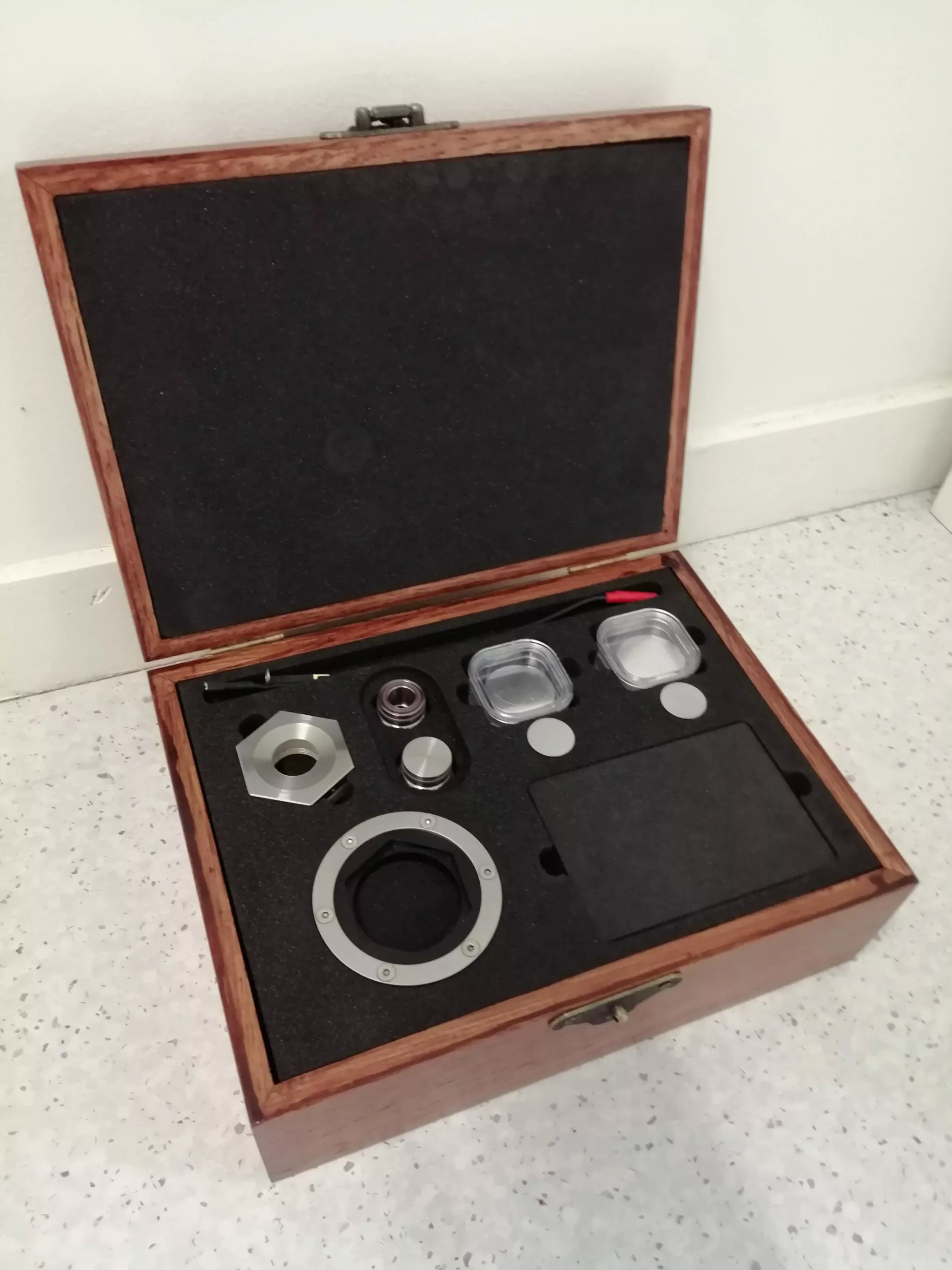XRD Analytical Platform
X-ray diffraction is a non-destructive method to characterize materials. This technique used by many labs makes it possible to: i) determine in about 10 minutes the purity of a sample, ii) quantify (% by weight) the several existing phases and iii) solve the “crystallographic structure” of new components, in other words determine the atomic three-dimensional arrangement in crystalized matter.
Two XDR main techniques are available at the platform. The first one (the historical method) is the diffraction on monocrystals. The current devices can analyse crystals up to 20-µm length (that about 2 to 5 times smaller than the diameter of a strand of hair). The second technique is the diffraction on powder. Often used, we can with this method determine the purity of a sample, calculate the particle size and solve the crystallographic structure.
Equipment and human resources
- Funded by the RS2E
- Diffractometer on monocrystals, Brucker Venture (see picture below), equipped with a molybdenum microsource, a 2D PHOTON 100 detector and a low (80K) and high (550K) temperature blowgun.


- Other funds
- 1 Bruker D8 Discover TXS diffractometer equipped with a molybdenum rotating anode. This device allows measurements in transmission geometry in about 20 seconds. Together with our electrochemical cell developed at the LRCS, it is possible to perform operando measurements on energy materials at high cycling rate, and study non-equilibrium phenomena.


- Other funds
- 1 diffractometer Bruker D8 Advance equipped with a copper anticathode and a cryo-furnace (180K- 450K) working under controlled atmosphere.
- 1 diffractometer Bruker D8 Advance equipped with a cobalt anticathode and a high temperature furnace (up to 1200K) working under controlled atmosphere.
- 1 diffractometer Bruker D4 Endeavor equipped with a copper anticathode and a sample magazine that can contain up to 48 samples for routine measurements.
In addition to this equipment, the LRCS is developing electrochemical cells allowing the concomitant acquisition of diffractograms and electrochemical data (galvanostatic curves). A new version is available, allowing measurements either in reflection mode or in transmission mode.
For more information, do not hesitate to contact Jean-Noël Chotard.


- Human resources
- 1 associate professor (Jean-Noël Chotard)
- 1 full professor (Christian Masquelier)


